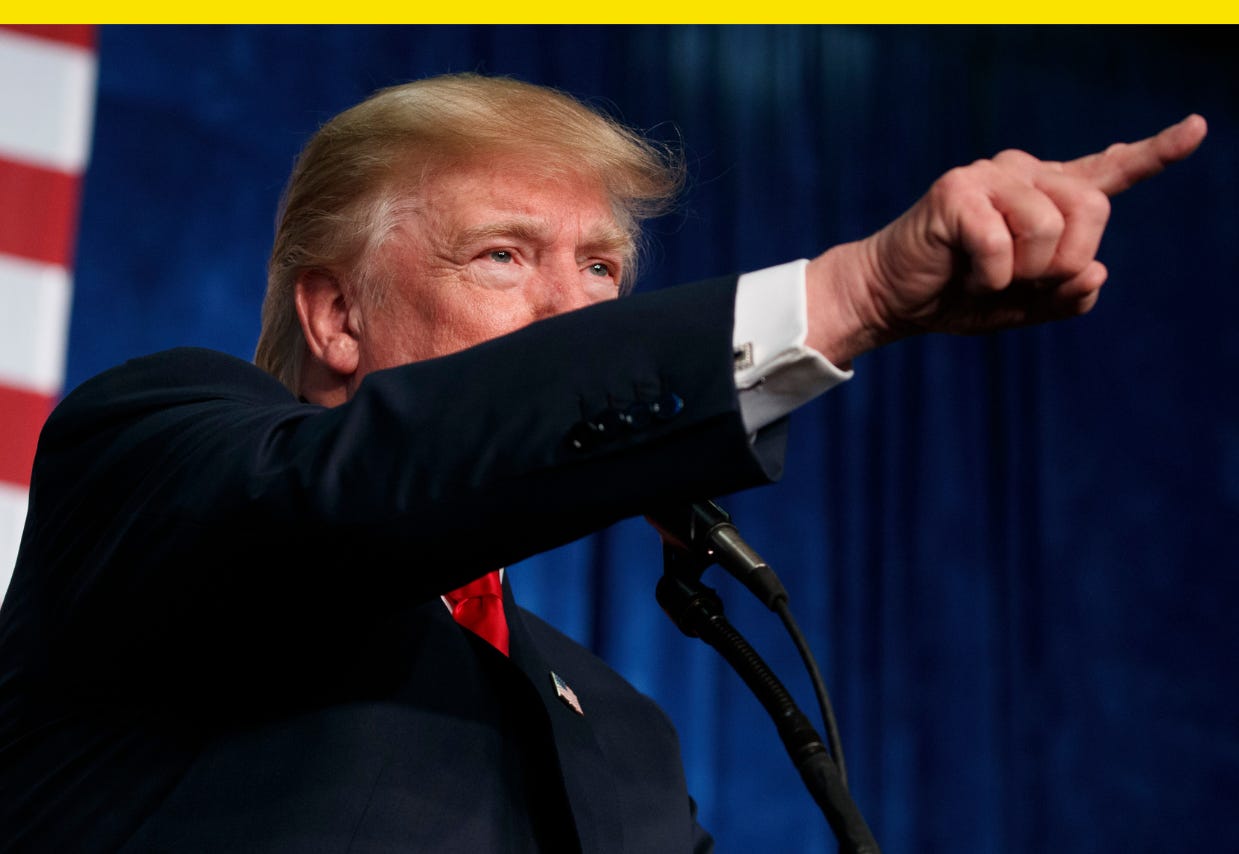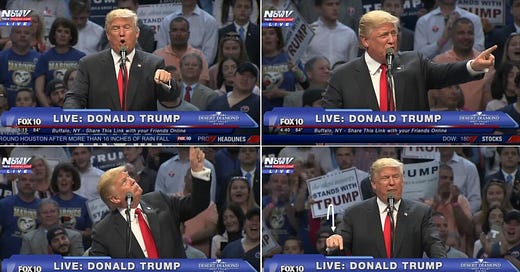How Trump uses finger pointing to visually communicate
Plus: Want to design the infrastructure of the future? Here’s three steps for the U.S. to get there.
Hello, in this issue we’ll look at the meaning behind all of Trump’s finger pointing and hand gestures when he speaks in public and what it has in common with other populist leaders, and what the U.S. needs to do to design better, more resilient infrastructure.
Scroll to the end to see: the O.G. poster that inspired the most famous finger point in all of American history 🫵
How Trump uses finger pointing like a secret language to visually communicate

President Donald Trump knows how to make his point. Literally.
Trump talks with his hands, using finger pointing and hand gestures in his public speech to supplement what he says with body language, and now a new study investigates what exactly he’s trying to say. It turns out that much like his verbal rhetoric, Trump’s hand talk is intended to direct attention, entertain, and build trust with his audience. It’s right-wing populist hand gestures 101.
Using 60 minutes of footage from Trump’s speech at a rally in Buffalo, N.Y., on April 18, 2016 (the one where he called 9/11 “7/11” before the New York primary), Christopher Hart, a professor of linguistics at the University of Lancaster in the U.K. who conducted the study, identified 94 total pointing gestures. He found 31% of Trump’s finger points were directed outward, 28% downward, 14% inward, and 5% upward, while the remaining 22% were other gestures, like a spiraling motion or “hopping” from one “location” to another, as he does.
Hart picked the Buffalo rally because it was packed with more than 11,400 people in attendance and because it was in Trump’s home state at the time. “All of this contributes to a somewhat febrile, feverish atmosphere inside of the arena which invites (or is aroused by) a particularly animated performance in which Trump produces a near constant stream of gestural activity,” Hart wrote in the study, which was published in the journal Social Semiotics. In other words, Trump’s hands never stopped moving during a high-energy rally on his home turf, making it a perfect case study.
Pointing is one of the oldest forms of human communication and since it’s universal, when Trump points, he’s communicating in a simple, easy-to-understand way. Previous research has found just as populist politicians use more conversational language than traditional mainstream politicians, they also use more hand gestures, Hart said.
When Trump points outward, his favorite place to point, it’s often because he’s speaking directly to the audience, according to the study. In the Buffalo speech, Trump pointed towards the crowd on one occasion after he accused Sen. Ted Cruz (R-Texas) and former Secretary of State Hillary Clinton of being beholden to special interests. “They’re not gonna do what’s right for you,” Trump said, emphasizing “you” as he pointed to the crowd and cameras. It’s Trump making a gestural argument for why his supporters should trust him and not other politicians, and a way of communicating the “you” he’s referring to isn’t “you” in the general sense, but you specifically.
“The gesture creates a sense that Trump is talking directly to you as an individual,” Hart wrote, and in directly connecting with the audience in this way, he’s communicating a more personal form of engagement that’s characteristic of populist leaders. “The gesture-speech combination thus contributes to an erosion of faith among his audience in other leaders, and by implying that Trump will do what is right for you, directly invites the audience to place their trust in him.”
Trump also points outwards to direct attention, as he did when singling out the press to demean them or when calling out a protester. “In a play characteristic of right-wing populism, rather than ignoring or diverting attention away from the protest, Trump calls attention to it in order to undermine and ridicule the protesters for comedic effect, which he achieves through infantilisation when he says ‘Go home to mommy. Bye,’” Hart wrote.
When Trump points downward, it’s often to indicate place, like when talking about “the United States,” “our country,” “your state,” “Buffalo,” and “here.” There’s often an element of performance when Trump points, like when he pointed upwards during his remarks to reference the top of an imagined U.S.-Mexico border wall. He looked up to where the top of the wall he pointed to would have been, to add to the theatrics.
“If anybody gets to the top of the Trump wall, it’s gonna be a long way down,” Trump said in his speech, before making a gesture to suggest people falling off.
When Trump points to himself, it’s often to contrast himself with other politicians. It’s something Hart says other populist leaders also do, and by claiming to put the interests of the people first, “populist speakers position themselves as distinct from other politicians.”
“Through pointing gestures, Trump is able to entertain his audience, engage directly with them, steer their attention, and align himself with his audience as a man of the people,” he said.
Pointing is such a simple way to communicate, and by layering his public speech with hand gestures, Trump adds meaning and emphasis to his words. Viewers pick up on it, even if they don’t consciously notice.
Previously in YELLO:
Want to design the infrastructure of the future? Here’s three steps for the U.S. to get there.

Natural disasters and extreme weather events are hammering America’s aging infrastructure. A new report lays out what the U.S. needs to do now to fix it, and it’s building more, better, and smarter infrastructure, from bridges, broadband, and dams to roads, levees, and parks.






